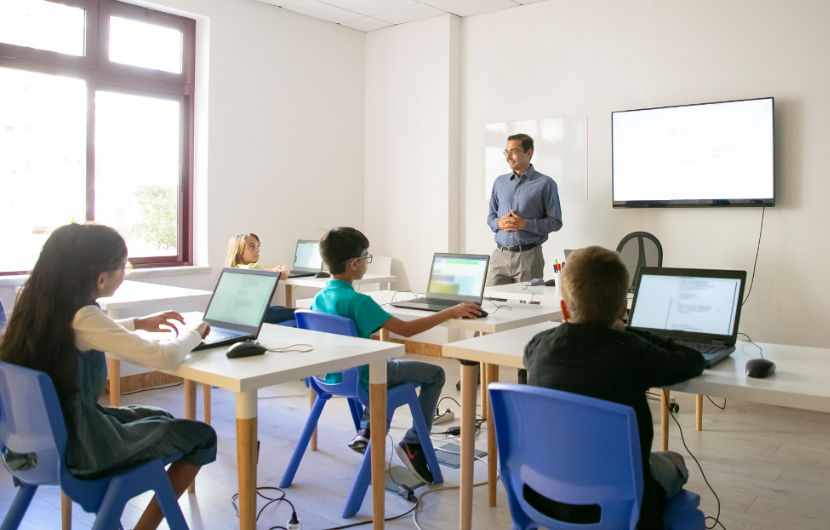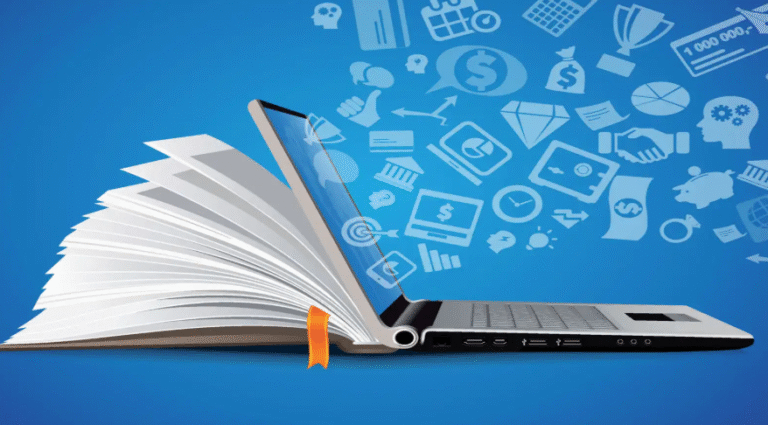Introduction: The Dawn of a New Educational Era
Education is undergoing a profound transformation. No longer confined to physical classrooms or printed textbooks, learning today is increasingly shaped by technology. From artificial intelligence-powered tutors to virtual reality explorations, technology is revolutionizing how knowledge is delivered and absorbed. This shift is not just a trend—it’s the future of education, opening doors to more personalized, accessible, and engaging learning experiences worldwide.
Historical Overview: Education Before Technology
Traditionally, education revolved around face-to-face instruction, physical textbooks, and standardized tests. While these methods laid a strong foundation, they often lacked flexibility and personalization. Students had to fit into a one-size-fits-all model, which did not cater to diverse learning styles or geographical constraints.
Defining Educational Technology: What It Encompasses
Educational technology, often referred to as EdTech, includes digital tools, software, and platforms that facilitate learning and teaching. This broad category ranges from simple e-books and learning management systems to complex AI-driven adaptive learning programs. Essentially, it’s any technology that enhances education delivery, engagement, or administration.
See also: myclassnews
Why Technology is Crucial for the Future of Learning
The pace of technological advancement demands that education evolves to keep students prepared for the future. Technology brings flexibility, accessibility, and the ability to tailor learning experiences to individual needs. It also fosters skills like critical thinking, problem-solving, and digital literacy, essential for the modern workforce.
Key Technologies Shaping Modern Education
Artificial Intelligence (AI)
AI is at the forefront of transforming education. Intelligent tutoring systems assess student performance in real-time, providing customized exercises and instant feedback. AI can also automate grading and administrative tasks, freeing educators to focus more on mentoring and creative teaching methods.
Virtual Reality (VR) and Augmented Reality (AR)
VR and AR create immersive, interactive experiences that textbooks cannot offer. Imagine exploring the ancient pyramids, dissecting virtual organisms, or practicing complex machinery—all from the classroom or home. These technologies deepen understanding by engaging multiple senses.
Online Learning Platforms and MOOCs
Platforms like Coursera, Khan Academy, and Udemy have democratized education. Massive Open Online Courses (MOOCs) provide high-quality content accessible globally, breaking down geographical and financial barriers to learning.
Gamification and Interactive Learning
Turning lessons into games increases motivation and retention. Gamified learning introduces challenges, rewards, and interactive content, transforming education into an enjoyable journey rather than a chore.
Mobile Learning and Apps
With smartphones and tablets ubiquitous, mobile learning allows students to study anywhere, anytime. Educational apps cater to diverse subjects and learning styles, making education truly portable.
Personalized Learning: Tailoring Education to Every Student
Technology enables education to move beyond standardized curricula toward personalized pathways. Adaptive learning platforms use AI and data analytics to adjust content difficulty and format based on individual progress, helping students master concepts at their own pace.
Data Analytics: Improving Learning Outcomes with Big Data
Educational institutions increasingly rely on data analytics to understand student behaviors, identify at-risk learners, and optimize teaching strategies. This evidence-based approach enhances decision-making and learning outcomes.
The Role of Teachers in a Tech-Driven Classroom
Contrary to fears of replacement, technology empowers teachers by automating routine tasks such as grading and attendance. Educators can spend more time facilitating discussions, mentoring, and fostering creativity.
Blended Learning: Combining Traditional and Digital Approaches
Blended learning integrates face-to-face instruction with online components. This hybrid approach offers flexibility and enables educators to leverage the best of both worlds to meet diverse learner needs.
Remote Learning and Its Long-Term Impact Post-Pandemic
The COVID-19 pandemic accelerated remote learning adoption worldwide. While challenges remain, many institutions continue to incorporate virtual classrooms as part of their educational model, recognizing the benefits of flexibility and broader access.
Access and Equity: Bridging the Digital Divide
Despite advancements, unequal access to devices and reliable internet threatens to widen educational gaps. Addressing the digital divide is critical to ensuring all students benefit from technology-driven education.
Collaborative Learning: Connecting Students Globally
Technology enables students to collaborate across cities and continents, fostering global citizenship, cultural awareness, and teamwork skills vital for today’s interconnected world.
Lifelong Learning and Micro-Credentials in the Digital Age
Education no longer ends with formal schooling. Online courses, micro-credentials, and digital badges offer continuous learning opportunities, helping individuals adapt to evolving job markets and technologies.
Challenges of Integrating Technology in Education
Barriers such as infrastructure costs, resistance to change, and lack of training hinder smooth EdTech implementation. Overcoming these requires strategic planning, investment, and stakeholder collaboration.
Cybersecurity and Privacy Concerns in Digital Learning
Protecting sensitive student data and ensuring safe online environments are paramount as educational activities move online. Schools must adopt robust cybersecurity measures and comply with privacy regulations.
The Impact of Technology on Educational Administration
Technology streamlines administrative tasks including scheduling, enrollment, and communication. Automation reduces errors and saves time, allowing institutions to focus more on educational quality and student support.
Future Skills: Preparing Students for Tomorrow’s Workforce
The future workplace demands adaptability, creativity, critical thinking, and digital literacy. Technology-infused education nurtures these competencies, better preparing students for the challenges and opportunities ahead.
Case Studies: Successful Implementation of Technology in Schools
Countries and schools around the world offer inspiring examples. Finland’s use of AI to support personalized learning and Singapore’s widespread integration of digital tools demonstrate the tangible benefits of EdTech investments.
Government and Policy Support for Educational Technology
Government funding, policies, and initiatives play a vital role in expanding EdTech access and fostering innovation. Strategic partnerships between public and private sectors accelerate these efforts.
The Role of Parents and Guardians in Tech-Enabled Learning
Family support is essential to maximize the benefits of technology in education. Parents can help manage screen time, encourage digital literacy, and foster positive attitudes toward online learning.
Sustainability and Technology in Education
Digital resources reduce reliance on paper and minimize travel, contributing to environmentally sustainable education. Technology supports eco-friendly practices that align with global sustainability goals.
Innovations on the Horizon: What’s Next?
Emerging trends include AI-powered content generation, brain-computer interfaces, and blockchain for secure credentialing. These advancements promise even more personalized, secure, and immersive learning experiences.
Ethical Considerations in Using AI and Technology in Schools
Transparency, fairness, and accountability are critical when deploying AI in education. Ensuring ethical use protects students’ rights and promotes trust in digital learning environments.
How Technology Can Foster Creativity and Critical Thinking
Technology encourages exploration, experimentation, and problem-solving. Tools like digital design software, coding platforms, and collaborative apps stimulate creativity and analytical skills.
Conclusion: Embracing the Future of Education with Technology
Technology’s integration into education is not merely an enhancement; it’s a fundamental evolution. By embracing these innovations thoughtfully, educators and policymakers can create a more inclusive, engaging, and effective learning environment that prepares students for a rapidly changing world.
Frequently Asked Questions (FAQs)
Q1: How is technology making education more accessible?
Technology enables remote access to high-quality courses and learning resources, breaking down geographical and financial barriers.
Q2: Will technology replace teachers?
No. Technology complements teachers by automating routine tasks and providing new tools, allowing teachers to focus on student engagement.
Q3: What are the biggest challenges of integrating technology in education?
Key challenges include infrastructure gaps, digital literacy, resistance to change, and ensuring data security.
Q4: How does personalized learning work with technology?
AI and adaptive learning platforms analyze student progress to customize lessons, helping learners move at their own pace.
Q5: What skills are most important for students in the future?
Critical thinking, creativity, collaboration, and digital literacy are essential to succeed in the evolving job market.


